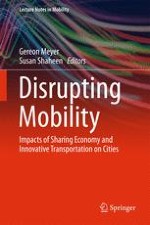2017 | OriginalPaper | Chapter
Smartphone App Evolution and Early Understanding from a Multimodal App User Survey
Authors : Susan Shaheen, Adam Cohen, Elliot Martin
Published in: Disrupting Mobility
Publisher: Springer International Publishing
Activate our intelligent search to find suitable subject content or patents.
Select sections of text to find matching patents with Artificial Intelligence. powered by
Select sections of text to find additional relevant content using AI-assisted search. powered by
